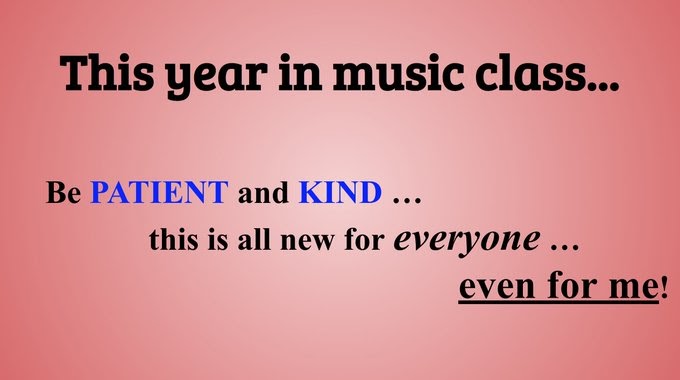The basic rookie problem, she explained, is a combination of exhaustion, high sensitivity about making mistakes and fear of failing at an extremely important job. Those stressors often reach a boiling point in October or November — a time when new teachers may end up crying in their cars. Given the stress, uncertainty and unfamiliarity of just about everything teachers are experiencing right now, Elden wouldn’t be surprised to see a similar trajectory this fall. “The difference is that no one is in their car. They’re either off screen or on mute or in a different part of their house, (going) through that same emotional breakdown.”
In her email series, Elden coaches new teachers through the toughest part of the year by encouraging them to get more rest, develop a support network and accept imperfection. Here’s how similar advice could help all teachers as they embark on a potentially overwhelming school year during the COVID-19 pandemic.
Reducing Exhaustion
Summer is typically a time for teachers to recharge. But this year, many people have been operating at “surge capacity,” and educators had to prepare for fall amid ever-changing expectations. Carpenter recalled talking with her colleagues at Lexington Public Schools in Massachusetts before school began and saying, “We’re so tired right now, how are we going to even manage?” One day, her department head told the whole team to take a full day off. No lesson plans, no emails, no texts. Just rest. Carpenter and her colleagues resisted the idea at first, but ultimately it made a difference. “It just took that one day to kind of snap me out of it. And then I felt better. Not 100 percent, but I felt like, OK, this isn't going to be as awful.”
Opportunities to refuel can come in smaller chunks, too. “It’s important to take time to breathe,” said Jen Hawkins, host of the Beginning Teacher Wednesdays podcast. Hawkins is an assistant principal at Hortons Creek Elementary School in Cary, North Carolina, which started the year with virtual instruction in mid-August. She said the preparation time and energy required for online teaching is grueling, as is being attached to screens all day. To ground themselves, some teachers at her school have been walking outside during lunch or simply closing their computers and stepping away when possible.
Elden, too, said that managing energy levels is critical. “We hear the term self-care thrown around, but often you don’t realize how bad you need a break until you’re taking it out on the kids and then feeling terrible that you did.” In addition to reminding new teachers to get sufficient sleep, she encourages them to find one aspect of the classroom each week that they can “get on autopilot,” such as the morning routine. Veteran teachers have likely worked out a number of these systems in their physical classrooms but may need to find new ones for virtual or hybrid settings. Elden said to start by identifying a source of constant stress throughout the week. Then use the weekend to devise a solution, so that “at least you know that next week is going to go more smoothly.”
Creating a board of advisers
One difference between this year and Carpenter’s first year teaching is that she knows who to turn to for support. She and the other elementary music teachers in her district worked together this summer to propose a feasible remote schedule, and she said they will continue to collaborate as they figure out what works and what doesn’t this year.
Schools often pair new teachers with mentors for that kind of support. While that term might feel odd for a veteran teacher, Elden said that cultivating a “board of advisers” can be useful at any stage of your career. The board should include teachers of similar subjects, teachers of similar kids, someone who can be trusted to be discreet, and someone “who is not a teacher but who knows your strengths that you can call when you really just feel like you’re failing.” Another addition this year might be a colleague or relative to help with technology. In a USA Today/Ipsos survey conducted in May, a quarter of teachers 55 and older reported difficulty with using technology for distance learning.
Hawkins recommended that teachers’ support systems include people who help you grow, people who remind you to put kids first, and people to hold you accountable for staying grounded. “It is so important for us to name our people who are going to help support us … and if we don’t have those people, now is the time to find them.”
Accepting imperfection
Teaching is hard, and new teachers often worry that they are secretly failing and about to be exposed, according to Elden. Experienced teachers are more likely to know that they’re not the only ones struggling, but the adjustment to virtual or hybrid teaching may bring back some of those insecurities. “Being a veteran teacher, I've always felt like, ‘I got this. I've done this before. If I have a little bump in the road it’ll be fine because I know what to do,’” Carpenter said. Now, she anticipates needing to give herself grace when, for example, a virtual lesson tanks and kids tune out. “I just need to be OK with failing,” she said.
Part of new teachers’ stress comes not just from individual mistakes, but from worrying about “failing at a job they consider one of the most important in the world,” said Elden. Between concerns about COVID-19 learning loss and a sharper spotlight on racial inequities in the U.S., some teachers may be feeling that burden even more right now. Elden wants to remind them to focus on what they can control. “Your job description has temporarily changed,” she said. “Being a good teacher with moments of greatness and moments of adequateness is OK.”
Hawkins advocated a practice she does for herself. Each night in her planner she writes one thing she did well that day. The habit provides a boost in the moment, and when she looks back over a few weeks or months, she can see how small successes have accumulated into larger progress. Hawkins didn’t always have that clarity, though. Faced with doubts in her first year of teaching, she readied her resume for jobs in other fields. The lesson she’s learned since then — that growth comes from discomfort — is applicable to everyone during distance learning, she said. “Sometimes you have to just jump in and do it so you can get better.”
Carpenter hopes her own willingness to jump in and to accept her imperfections will allow students to do the same. For her first asynchronous lesson she created a slide that says, “This is all new for everyone … even for me!”



